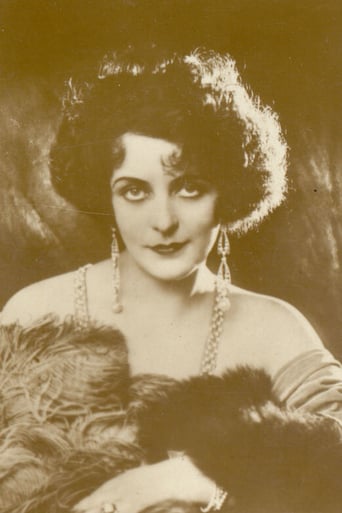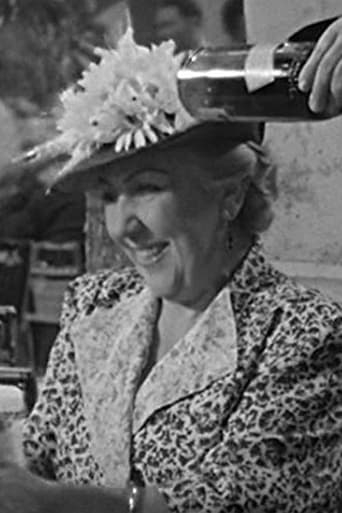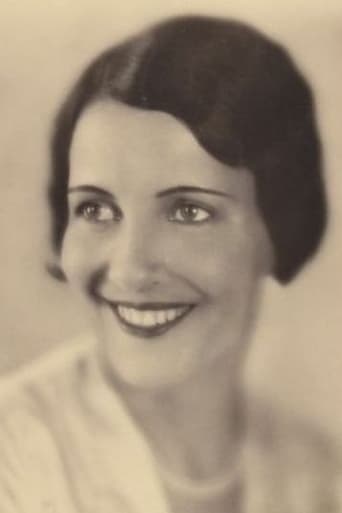Redwarmin
This movie is the proof that the world is becoming a sick and dumb place
Stoutor
It's not great by any means, but it's a pretty good movie that didn't leave me filled with regret for investing time in it.
MusicChat
It's complicated... I really like the directing, acting and writing but, there are issues with the way it's shot that I just can't deny. As much as I love the storytelling and the fantastic performance but, there are also certain scenes that didn't need to exist.
Kaelan Mccaffrey
Like the great film, it's made with a great deal of visible affection both in front of and behind the camera.
Horst in Translation (filmreviews@web.de)
"Geheimnisse einer Seele" or "Secrets of a Soul" is a German black-and-white silent film from 1926, between World Wars I and II and it has its 90th anniversary this year. The director is the notable Georg Wilhelm Pabst and there are no less than four writers who worked on this one. It is a case of too many cooks spoiling the broth I must say as I developed little interest in the story or characters and I would not say this is the actors' fault. Some of the names will appear familiar to you if you care about German silent film from the 1920s, most of all lead actor Werner Krauss of course, who is playing the tormented scientist here. There are differing runtimes indicated for this one from slightly over an hour to slightly over 1.5 hours, so parts of the film may be lost or it is just a case of differing frames per second. Overall, I cannot say which version is best to watch, because I just did not care about the film or the characters at all. It's a shame as there was definitely more potential here looking at the cast, the director and basic story elements. But the premise was not fulfilled. Watch something else instead.
mlink-36-9815
There are a lot of important elements the restorers chose to omit from the movie. There are letters that are opened & are supposed to appear on screen for the audience to read. Gone. A man pulls up on a bike delivering a telegram. Gone. All references to the name of the man Martin Fellman are omitted. When he comes home after leaving his key,he sits down in front of the idol. It disappears leaving only a baby image. Gone. His wife see a dog & litter of puppies, She says: "I wish I had a child." Gone. The Murnau people made the movie incoherent by this censorship. Its a disgrace. They had no right to do these changes to the movie as they are not part of the creative process.
MartinHafer
Freudian psychiatry was all the rage back in the 1920s. It was the first psychotherapy and did much to popularize the notion of individual therapy to cure mental illness. And, not surprisingly, it was particularly popular in the German-speaking world. So, the fact that the German film maker G.W. Pabst would make a film based on Freud's theories isn't surprising at all. Just understand that since this type of therapy was the first, much of his work today might be seen as quaint or even obsolete. This isn't a slam against Freud--as he had to start somewhere. But the film's HUGE reliance on symbolism, insight and long-term treatment are, for the most part, not part of most therapies today--so don't expect this is like therapy in the 21st century. It's because of this that the film makes a wonderful viewing experience for psychology students--to understand the history of the treatment of mental illnesses. It brings to life Freud's ideas and shows the style of treatment he popularized.The story is about a couple--in particularly the husband. For unknown reasons, he's recent had a fantasy of stabbing his wife! Fortunately he realizes this is sick and is seeking help from a psychotherapist. After months of probing into his conscious and unconscious, the man's deep-seeded neurosis is uncovered and cured. And, as a result the marriage is saved and the family has a happy ending.The film has some wonderful dream sequences and lots of deliberate symbolism--and I thought this was all very clever. However, as an ex-psychology teacher and therapist, I was intrigued that the film makers did explore many common themes in Analytic psychology BUT a couple very obvious interpretations were never mentioned in the film--possibly because they were much more sexual than the interpretations given in the movie (though most therapists of the day would have seen them). First, there was LOTS of phallic imagery but the film never went there to discuss them. Any analytic therapist of the day would have jumped at the thrusting of the knife scene by the patient as well as his feelings of impotence. Also, his desire to kill her specifically with a knife is, according to Freudians, a VERY sexual sort of killing--again, with STRONG phallic connotations! I thought this was pretty funny--along with phallic images of trains and towers in the film--all of which, again ACCORDING TO FREUDIANS, would represent the sex act and sex organs. Now I am not saying I believe all this, but classical Analytic theory is based on this sort of interpretation...really.Overall, great fun for me, as in addition to psychology, I have taught history and this film is a great way to combine the two disciplines. I am sure this is not everyone's cup of tea--but it was, at least to the right audience, quite interesting--and one of the very earliest films to explore the Freudian/Analytic style of thinking and conceptualizing illness.By the way, if you enjoy movies about phallic imagery, dream interpretations and the like, try watching the COMPLETE Hitchcock film "Spellbound". I say complete, because Salvador Dali helped create a Freudian dream sequence that is great fun to watch but which in some versions is truncated. Also, Dali made an experimental film for Disney that was never released that is based on Freud's work that only recently has surfaced on the internet. It's wild and worth finding as well.
FerdinandVonGalitzien
At the beginning of the last century, Herr Sigmund Freud was a notorious Austrian neurologist and psychiatrist who was famous for his innovative studies of mental diseases and the complicated unconscious mind. This led him to found psychoanalysis and write "Die Traumdeutung" ( The Interpretation Of Dreams ) a turning point in modern psychiatry that claimed the path to the unconscious could be found in dreams. Since aristocrats usually have nothing in their minds, psychoanalysis could do little to fill such a void but was very useful for average people whose more accessible simple minds made them good subjects for these innovative psychiatric methods."Geheimnisse Einer Seele" ( Secrets Of A Soul ) (1926) , directed by Herr G. W. Pabst, an Austrian like Herr Freud, is about this new psychoanalysis, a subject in fashion in Germany due to the complex and confused Teutonic minds, that Herr Pabst efficiently and aseptically describes in this film.The film is famous for its notorious dream sequence in which a chemistry professor's unconscious fears come to the surface and threatens his marriage. It is all connected to an incident in the neighbourhood and the return of his wife's cousin from India.The first half of the film shows the tranquil and bourgeois life of the professor together with his wife and the (at first) unimportant events that little by little will affect the professor's unconscious and will take shape in a traumatic dream. This is the most unique and interesting part of the film, the late Expressionist dream sequence, a nightmare, a nonsense puzzle that during the second half of the film will be analyzed and described with the help of a psychoanalyst, natürlich!.Herr Pabst, due to his Teutonic and organized human nature, describes and solves every little detail shown during the powerful dream sequence with the knowledgeable help of the psychiatrist of the film; a coherent, logical and aseptic analysis that lacks emotion and rhythm so there is no room for mystery. The story also has a conservative and too conventional happy ending that throws the film a bit off balance and is too predictable given the odd subject matter.That's what happens when you are an open-minded and common person, your innermost secrets are easily revealed, so unlike the wicked, empty and inscrutable aristocratic minds.And now, if you'll allow me, I must temporarily take my leave because this German Count must wake up.Herr Graf Ferdinand Von Galitzien http://ferdinandvongalitzien.blogspot.com/






